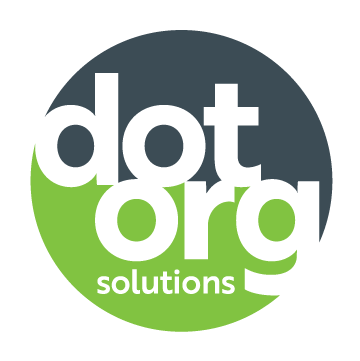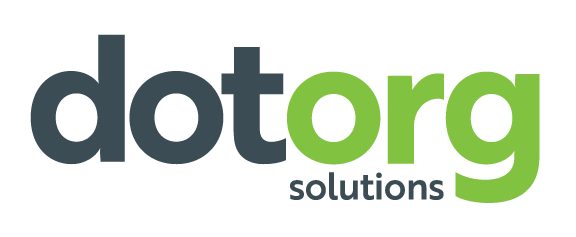Choosing the best social media platform for your nonprofit
There are so many social media options available, so choosing the best social media platform for your nonprofit may be difficult.
You have likely scrolled through trends on TikTok, connected with distant friends on Facebook, or shared glimpses of your outdoor adventures on Instagram. You understand how to interact with social media on a personal level. But do you know how that translates to your nonprofit and how to leverage a particular platform to benefit your organization?
There is near-unlimited potential to connect to people all across the globe. It’s no wonder that 87% of nonprofits are using social media as a way to help meet marketing and fundraising goals. According to Nonprofit Source, 55% of people who interact with nonprofits on social media end up taking some form of action, whether it be making a donation or volunteering.
But knowing which platform to use to help achieve your goals can be confusing, as each has its own specific purpose, audience and content style. It’s important to engage on the appropriate platforms but you don’t necessarily need to be an expert on each one.
We have broken down each major platform, its intended goal and audience to help you determine which of the platforms may work best for your nonprofit.
Facebook: The founding, do-it-all platform
Overview: Facebook remains the most popular social media site among people and businesses alike with more than 3 billion active users. According to the 2023 Nonprofit Tech for Good Report, 96% of nonprofits are using Facebook in their marketing efforts. So if your organization isn’t already active on the platform, it is time to get started. Having a Facebook page helps your nonprofit appear credible, provides networking opportunities with potential donors and other prospects and allows you to make more personable connections with your constituents.
Facebook allows you to share photos, videos and updates in addition to creating events, groups and pages. Sharing relevant information on this site is important, but it is equally important to post high-quality, engaging content.
The platform offers personal and business accounts where you can access Facebook’s Ads Manager. There is also a fundraising tool that allows you to raise money on the platform through fundraisers, featured donate buttons and more. 37% of nonprofits on Facebook are using this tool. (Note: Donors do not have to share their contact information with your organization when they give on Facebook. So, if you are looking to capture this data (and you should be), drive donors to your own donation pages.)
Purpose: Make connections and share information to the largest audience.
Primary audience: Facebook is the top platform for the 30+ age group.
Suggested uses: Build a community of followers, expand recognition of your organization and promote events, share content that is relevant to people who use your organization.
Nonprofits doing things well: Check out @unicef and @clevelandmuseumofart on Facebook.
Instagram: The visual, creative platform
Overview: Instagram is a visual storytelling platform best used for posting images and videos. Content must be high-quality and relevant to effectively engage with audiences and create a strong social presence. While creative elements are the primary focus on the platform, accompanying captions help tell users more about your nonprofit, provide offers and allow you to interact in a personable way.
Instagram Reels is a newer feature on Instagram that focuses solely on short-form video content, a trend in social media that has made its mark on nearly every platform. Reels allows you to create and share 15-second, multi-clip videos with your followers and even a larger global audience through the Explore tab.
If your nonprofit has excellent visual content and would benefit from sharing that content, this is the place for you.
Purpose: Post visual, engaging content to a younger generation.
Primary audience: Adults ages 25-34.
Suggested uses: Communicate your cause and update your community in the most powerful way – through images, mixed visual media and Reels.
Nonprofits doing things well: Check out @natgeo and @clevelandclinic on Instagram.
X (formerly Twitter): The conversational platform and breaking news resource
Overview: X is the place for conversations. The platform’s primary content consists of posts from users sharing thoughts, opinions, or remarks about life, society and current events. X is a great platform for conversing in real-time and is often used as a source for breaking news or providing real-time event updates. Users can tag other accounts to comment on posts and continue conversations, which can help your nonprofit engage with users in a conversational and personal way.
Purpose: Discuss or comment on content, provide real-time event communication or distribute breaking news.
Primary audience: Ages 25-37.
Suggested uses: Use real-time news to advocate for your mission and build your community, provide event updates as they happen, create buzz around a new project or program that is launching soon
Nonprofits doing things well: Check out on @TEDTalks and @clevemetroparks on Twitter.
LinkedIn: The professional, networking platform
Overview: The main purpose of LinkedIn is to connect with other professionals locally, domestically and internationally. Content is typically career-related and includes sharing of industry news, personal career updates and job recruitment. In recent years, more educational content is being added by users, making it a go-to platform for trusted information and resources. LinkedIn users are likely using the platform for business purposes, including job searches, talent recruitment, networking, sales leads, etc. This creates an easy audience to identify potential donors and board members or network with others in your industry. It also is a great way to recruit volunteers and recognize corporate donors and sponsors.
Purpose: Share, engage and learn career-related information and content.
Primary audience: College graduates, ages 30-64.
Suggested uses: Network with other nonprofit professionals, share job postings and volunteer opportunities, hire for open positions, recognize and connect with corporate partners, recruit board members.
Nonprofits doing things well: Check out The Nature Conservancy and Junior Achievement of North Central Ohio on LinkedIn.
TikTok: The entertaining platform
Overview: TikTok is a platform where short videos are created, edited and shared, all within the app. Short videos can range from a few seconds to 10 minutes long. The app gained popularity with trends that included a dance, song or activity that people would watch and recreate. Now, the platform has expanded to include videos of your favorite podcast to people sharing their favorite recipes. While Gen Z are the main contributors and users of the app, other age groups and corporations like entrepreneurs, artists, brand names and nonprofits are catching on and creating fun content of their own.
TikTok’s video-only medium is different from other social media platforms, but that doesn’t mean you need to shy away. It can be great for your social media strategy, especially if you're looking to target a younger audience.
Purpose: Post light-hearted, fun or informational content in the form of videos.
Primary audience: Vastly made up of younger generations, ages 10-19 make up 25% of users, with ages 20-29 closely behind at 22.4% and ages 30-39 at 21.7%.
Suggested uses: Create awareness about your mission, especially to a younger audience, or use for training/informational videos and performance previews.
Nonprofits doing things well: Check out @americanheartassociation and @akronzoo on TikTok.
Using these platforms in a way that aligns with your nonprofit’s marketing strategy can help boost your social presence. Learn more about each platform and discover essential tips for getting started.

Dot Org Content Team
Dot Org Solutions works with nonprofits of all types to raise more money, communicate effectively and educate their constituents so they can build better communities. Our proven systems and years of experience help reduce the anxiety and stress felt by nonprofit teams, giving them more time to focus on other important things.

